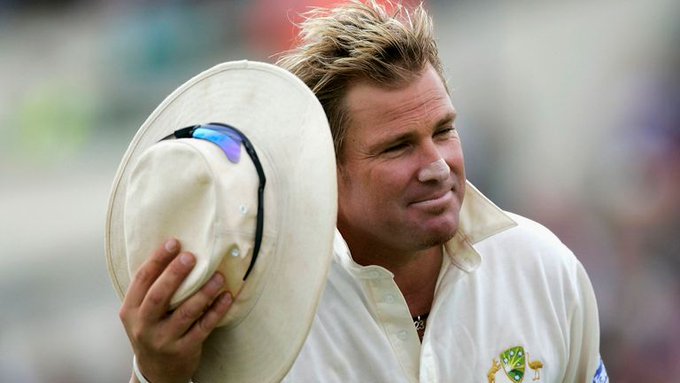Vale to the King
0Shane Keith Warne, 1969-2022
In stunning and desperately sad news overnight, cricket has lost one of its all-time greats with Shane Warne gone at just 52, the victim of an apparent heart attack in Thailand.
Love him or loathe him, Warnie – as he came to be known in the classic modern Australian cricket vernacular – became not just a great of cricket, but an icon. Few can say that they changed the game to the extent that he did, and doing so by reviving the dying art of leg spin.
Whenever he took the ball, it was must-watch viewing as he regularly confounded and bemused the world’s best.
Coming out of suburban Victoria and mixing cricket with AFL, Warne made a rapid rise through the ranks and debuted for his home state in February 1991. Ten months later came his Test debut in the New Years Test against India at the SCG; in an inauspicious start that belied what was to come he took just 1/150, followed by 0/78 in Adelaide. But the light flickered when three quick wickets in Colombo took Australia to a 16-run win over Sri Lanka, then burned brighter when he took 7/52 in the second innings on his beloved MCG to a win over the West Indies.
But where he really exploded into the conscience was in the 1993, and *that* ball to Mike Gatting. It still seems scarcely believable that someone could make a cricket ball do that, let alone with their first delivery on cricket’s oldest stage.
The Ball Of The Century.
RIP Warney. pic.twitter.com/6cmnJVkyPg— Jamie Wall (@JamieWall2) March 4, 2022
From that moment, Warne was a force of cricketing nature. The return Ashes saw him take a career best 8/71 at the Gabba and then his only Test hat-trick in the Boxing Day Test in front of his faithful at the ‘G’. He, along with Glenn McGrath, was the tip of the Australian bowling spear.
Records and accolades fell across the rest of the decade. Jacques Kallis became his 300th wicket in early 1998, and later that year Rahul Dravid his 310th, passing Lance Gibbs’ record for a spin bowler. The Australian record held until then by Dennis Lillee fell at Eden Park in March 2000, when he ended the first Test by dismissing Paul Wiseman for wicket number 356. He’d also receive a supreme accolade that year, named as one of the five Wisden Cricketers of the Century alongside Don Bradman, Garfield Sobers, Jack Hobbs, and Viv Richards.
But from that point injuries – and an enforced absence – began to dog him. 400 and 500 came, but he was beaten to Courtney Walsh’s then-record of 519 by his rival and contemporary, Sri Lankan Muttiah Muralitharan. Warne overtook Murali at 533 in October 2004 when he had Irfan Pathan caught in Chennai, and would remain ahead until he retired after the 2006/07 Ashes. Marcus Trescothick would be his 600th wicket in the 2005 series, and Andrew Strauss his 700th in his penultimate Test at the MCG. His 708th and final would be Andrew Flintoff, stumped by Adam Gilchrist.
Warne was no mug with the bat either, accumulating over 3,000 runs in the lower order. But a Test century eluded him; no one has scored more Test runs without one than him. The closest he got was at the WACA in December 2001 he was out for 99 caught by Mark Richardson off the bowling of Daniel Vettori, off what was later found to be a huge no-ball.
He also eschewed the famous ‘Baggy Green’ in favour of the widebrimed white floppy hat.
Warne was also a force in the ODI game, with a bowling average with the white ball erringly similar to his Test number. He played in two World Cups making the final in each. In 1996 he was ineffective as Australia lost to Sri Lanka, but at his best in England in 1999 claiming four wickets in that pulsating semi-final win over South Africa before Australia cruised past Pakistan in the decider. Suspension cost him the 2003 edition.
Retirement from the international game would not be the end for Warne though, as the new T20 circus gave him a new opportunity – four overs per game seemed ideal for someone nearing 40. Signing with the Indian Premier League he would play in four editions for the Rajasthan Royals, winning the inaugural title, before returning to Australia for his hometown Melbourne Stars in the new Big Bash League. It wouldn’t be until the end of the 2012/13 season that he’d finally exit competitive cricket, at 43 years old.
Beyond those, he also had a lengthy association with Hampshire in English county cricket.
But on the field is just part of the Warne story. A maverick, controversy and he were seldom far apart; it’s doubtful any cricketer has had as many column inches dedicated to them as he has. A history of those would be a column all of its own but here’s an edited list: the smoking, the drinking, the cavorting with a stump on the Lord’s balcony, the diet – he once had cans of spaghetti and baked beans flown to India, the feuds with Arjuna Ranatunga and others, the “can’t throw, can’t bowl” comment that he was exonerated from, the lewd conduct, text messages and more, the plastic surgery, the contact and taking money from a bookmaker in exchange for information, and the infamous “diet-pill” saga that saw him banned from the game for a year and threw his own mother under the bus.
And then there was the romance with English actress and model Liz Hurley, coming after his divorce from his wife Simone with whom he has three children.
He could be famously prickly. There was that time he was snapped smoking by a Wellington teenager despite fronting an anti-smoking campaign in Australia at the time, and another when his conduct in respect of his charitable foundation was questioned he used his time on camera before a day’s play in a Test to challenge those critics. Balancing that however he was generous with his time; there’s a legion of kids who had their moment with him to learn a tip or few about bowling leg spin and closer to home he made the trip across the Tasman for the “Fill The Basin” charity match to raise funds in the aftermath of the devastating 2011 Christchurch earthquake.
A move into the media was an obvious path. Outspoken and biased, you couldn’t accuse him of not playing to his audience even if views were often the encapsulation of the “Stockholm Syndrome” of recent Australian commentary.
As you’d expect there’s a mass of tributes, but perhaps no bigger than the announcement by the Victorian State Government that the MCG’s Great Southern Stand, one of the biggest in the world, would be renamed in his honour. For someone larger than life it seems incredibly fitting.
He leaves us way too soon.
The stats:
Test: 3,154 runs @ 17.32, HS 99. 708 wickets @ 25.41, BB 8/71
ODI: 1,018 runs @ 13.05, HS 55. 293 wickets @ 25.73, BB 5/33
Follow Scott on Twitter

